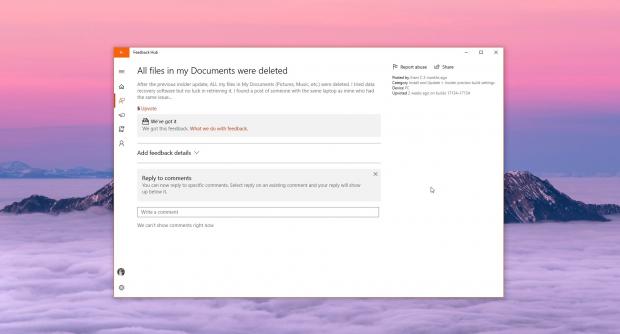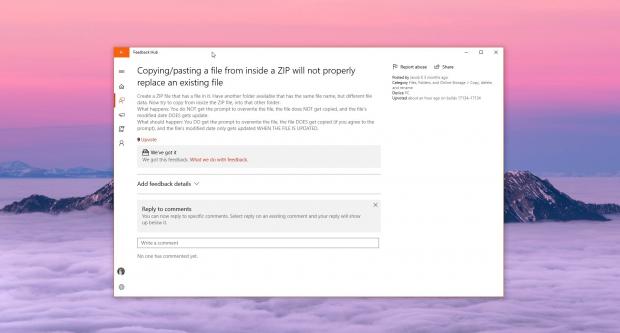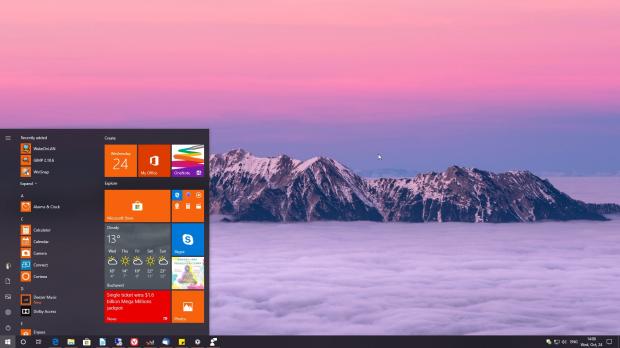I guess we have all come to the conclusion that Windows 10 version 1809, officially baptized October 2018 Update, is the buggiest OS feature update released since Microsoft started work on Windows 10.
In addition to tens of issues affecting performance, breaking down apps or features, and causing stability problems, there are two major bugs in Windows 10 potentially causing data loss.
And surprisingly, both of them were reported while Windows 10 October 2018 Update was still in the testing stage, but somehow escaped unfixed and eventually hit users’ devices.
But let’s take everything one at a time to see how this actually happened.
Basically, Microsoft uses the Windows Insider program with the otherwise brilliant goal of letting users worldwide to try out Windows 10 feature update in advance before the public launch takes place. This is supposed to help the company improve the OS based on users’ suggestions, but at the same time also lend a hand to the development team to fix bugs and refine the performance.
To get in touch with users in a more streamlined manner, Microsoft has launched the Feedback Hub, a built-in feedback platform that’s available on Windows 10 and which the company recommends using whenever you come across a bug.
The software giant says this is the best way to make yourselves heard and it promises that all feedback there is verified and your opinion counts. But is that really so? The Windows 10 version 1809 fiasco seems to suggest otherwise.
As said, there are two major bugs in Windows 10 version 1809 potentially leading to data loss, and both of them were actually discovered during the preview stage and reported to Microsoft before the launch of the update to production devices.
First of all, it’s the data removal bug that triggered the suspension of the Windows 10 version 1809 rollout. This particular issue has caused the removal of user files in libraries, particularly in the Documents folder, and Microsoft acknowledged it only a few days after the update became available to everyone on October 2.
The bug, however, was actually reported several months before the October update received the go-ahead, only that for some reason, Microsoft ignored it. What’s more, the bug was discovered by a Windows insider and reported on the Feedback Hub, the company’s preferred feedback platform.
Second of all, there’s a newly-discovered issue that can also lead to users losing some of their data because an overwrite prompt is no longer displayed when copying files from a ZIP archive to a location where files with the same name already exist.
The company has already acknowledged the bug and said a fix is on its way, but needless to say, the glitch has the potential of wreaking havoc on some systems.
Yet again, the bug was discovered and reported by a Windows insider during the preview stage of the October 2018 update. The report was published in the Feedback Hub and for some reason was ignored by Microsoft.
So what’s actually happening here? Is Microsoft ignoring bug reports?
Every report in the Feedback Hub receives a small “We got it” response from Microsoft to let users know the feedback was successfully submitted and received by the company. This is an automated response and is probably the best way to go given that Microsoft probably receives millions of such messages.
Samer Sawaya, a Senior Program Manager Lead on Windows Feedback, provides an in-depth look at how the feedback submission process happens at Microsoft.
“The goal of our team is to connect teams across Windows directly to the customer feedback you provide, and to make it very simple to leverage your feedback within the code we’re writing—to make it better,” Sawaya says.
Basically, given the amount of feedback the company receives, it’s nearly impossible to keep track of every single issue that is being reported on the Feedback Hub.
Twitter user @HoloSparkeon says feedback submitted by Windows Insider MVPs has higher priority, so the best way to go is to actually report a bug to an MVP before they can forward it to Microsoft directly.
In other words, bug reports that aren’t getting many upvotes and thus have lower visibility have fewer chances of being addressed by Microsoft engineers. If this is the accurate, it doesn’t make much sense and it more or less makes reporting bugs in the Feedback Hub a waste of time for 9 in 10 Windows insiders.
Sawaya, however, says new feedback is looked into as well, no matter the number of upvotes.
“Teams in Windows also receive regular automated emails that highlight for them feedback issues specific to their areas that they have not yet addressed. These emails contain views on top issues by upvotes, but also different views that are not dependent on number of upvotes—like new and trending feedback,” the Microsoft program manager explained.
And yet, despite all of these, Microsoft missed two major bugs that eventually turned Windows 10 version 1809 in what could be the second Windows Vista.
What I think Microsoft should do now is provide some clarification as to how this happened. Users need to know if their feedback really matters, and if it does, how it was possible for two critical bug reports to be ignored. Otherwise, sending feedback to the company just doesn’t make sense anymore.

 14 DAY TRIAL //
14 DAY TRIAL // 



